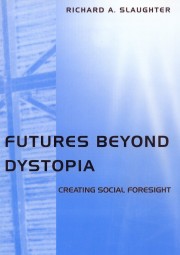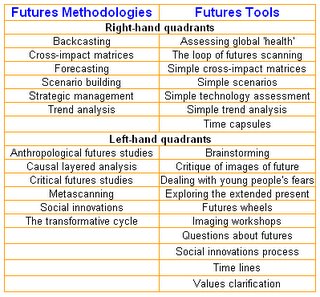The Best of Times - The Worst of Times?
 (This work is licensed under a Creative Commons License.)This great Flash mockumentary
(This work is licensed under a Creative Commons License.)This great Flash mockumentary by journalists
Sloan and Thompson (thanks for the links Pete) explores the possible death of print media (NY Times) in a media 'history' from the birth of the WWW in 1989, through the births of Amazon(94), Google(98) and Blogger(99), the pivotal 'Web2.0' [my term] year of 2004 and into 2015 when the NY Times is "just a newsletter for oldies"...
According to columnist
John Leo:
"Rupert Murdoch, speaking at the recent convention of the American Society of Newspaper Editors, advised the group to encourage their readers to use the Internet more as a supplement to print coverage He warned that newspapers risked being "relegated to the status of also-rans" if they don't make use of the Internet. Columnist Rick Brookhiser had a blunt comment in the New York Observer: Murdoch was just being polite--what he meant is that newspapers are dead."
I recently discovered from Tim Lauer's blog that the NY Times is now podcasting. :-)
(There is an earlier version called EPIC 2014 which has some interesting differences...)
I wonder what an 'history' of education from 1989 to 2015 would look like? Educational possibilities for around 2015 is something a number of edu-blogs have been exploring over the last couple of months... eg 2Cents Worth
How much leadership and wisdom will educators (and students) inject into the educational version of 'EPIC'? (Will there even be an distinct education version?) Will it all 'just happen' without direction from educators? Will it be superficial or deep?
The time to co-create preferred educational futures is certainly NOW if we want to move into the best of educational times... Fortunately we are onto it :-)
Labels: 21stCentury, communication, ICT tools
Integral Futures
 All education is futures education
All education is futures education according to Australian futurist
Richard Slaughter. He says most schools are about preparing students for active citizenship in the future. And
"young people do not need to be persuaded to consider the future. They already have powerful interests in the self-constitution of their own lives."
However he also says:
"The challenge is to re-invent schools on a new philosophical and operational basis, not see them over-whelmed by economic rationalism, still less by the over-hyped 'communications revolution'. "
I'm reading Futures Beyond Dystopia: Creating Social Foresight by Slaughter and think it has much to inform current curriculum initiatives - particularly now in Tasmania with Personal Futures and World Futures 'essential learnings' for K-10 and Futures a key purpose in the new Post-Year 10 Framework.
To avoid shallow and often overly Westernised and empirical futures perspectives Slaughter calls for an integral approach to futures at all levels of education including students, teachers, curriculum leaders and administrators. "The need is for a broader and deeper view of futures enquiry."
'Integral futures' is about including subjective inner realities along with objective outer realities - something often called for by holistic educators. Slaughter shows how Wilber's 4 Quadrant AQAL Integral Model provides a powerful conceptual framework that gives breadth, depth and balance to futures literacy, futures methodologies and futures tools.
In this way the critical importance of looking at cultural values, assumptions and worldviews (lower left quadrant) and the inner world of individual identity, meaning and purpose (upper left quadrant) as key aspects of any transformational process is not forgotten.
 Slaughter maps pop futurism, problem-oriented futures work, critical futures studies, epistemological futures, and environmental scanning across Wilber's quadrants showing the strengths and gaps in each approach over the last century.
Slaughter maps pop futurism, problem-oriented futures work, critical futures studies, epistemological futures, and environmental scanning across Wilber's quadrants showing the strengths and gaps in each approach over the last century.
Of course with all this talk of futures we need to remind ourselves that futures education is about empowering students in the present - or better still perhaps in the 'NOW' which includes and expanded sense of past-present-future.
I recently saw this Alan Watts Flash presentation on an Integral Education Forum which graphically shows the dangers of always looking to (waiting for) the 'future'... well worth a look if you haven't seen it.
With the current global focus on transforming learning and teaching an 'integral futures' perspective seems timely as we look at possible, probable and preferred educational futures - lest we forget the critical place of both individual and collective inner realities... for both students and teachers.
Labels: 21stCentury, conceptual frameworks, integral, metacognition, worldviews
Elements of a New System

Still trying to get my head around the ways in which ICT might support students, teachers and administrators as we begin to implement the new
State Curriculum Framework for years 11/12...
The timing is 'interesting' because at my school (
Hobart College) are currently rebuilding our network (15 servers, 400+ PCs, 1200 users) so I'm thinking from the ground up... mind you it all has to be in place within a month!
The new curriculum is about "
engaging with all students in the learning that will empower them to create and realise purposeful futures." I have been looking at some docs (
PowerPoint and a
Table) from last year outlining the Learning Elements that make up part of the Framework. Note that these 'elements' are not implemented in isolation. The Framework emphasises an "
holistic view of learners and learning."
Anyway... so far I have developed some maps trying to clarify some of the relationships between ICT and the new curriculum from different perspectives...
Personal and Learning Spaces (
basic and
expanded) looking at the relationships between our existing portal infrastructure, student personal spaces on the internet, and www services; and
Access and Publishing (
basic and
expanded) looking at how students (and teachers) access ICT and some of the information flows.

I have also started to list applications that might have a higher profile within the new curriculum such as:
MS Photo Story, MS Producer, MS Movie Maker - for storying, student voice and presentations
Windows Media Encoder - for podcasting, help files
CMAP - for concept/mind mapping
Skype - for national/global communication/collaboration
Vensim - for modelling systems, simulations, futures
We are currently installing
MS Live Communications Server to gain more communication/collaboration functionality out of MS Office and
MS SharePoint.
Lots to think about... and we still have the other 100+ apps to deploy... fortunately we have a skilled and efficient Computer Services team! Thanks guys :-)
Labels: curriculum, ICT tools
Weaving Webs

I’ve been playing with
Web 2.0 - discovering what I already knew (without using the buzz-word) and exploring new possibilities for learning and teaching…
Where Web ‘generation 1.0’ could be said to be about accessing information and services
from the internet Web 2.0 is more about personal presence, contributing, connecting and sharing
on the internet. For example rather than ‘google’ for a piece of information I might ask a trusted ‘friend’ through their blog, portal, shared bookmark, messenger service… Rather than seek an expert opinion I might share my dilemma within a ‘community of practice’.
So, while playing with so-called Web 2.0
‘social software’ such as blogging, podcasting, social bookmarking, blogrolls and feeds I’ve also been reading and talking about about learning ecologies, personalised learning and 21st century curriculum within educational communities.
I have pursued recommended reading such as
Personalisation and Digital Technologies , the
Social Networks Report , browsed sites such as
Electronic Portfolios , and looked at implementations such as
my-iPlan and
eLGG .
And now I am thinking about the impact of all this on the implementation starting in 2006 of our new State Curriculum Framework for years 11/12. I have begun to map my thinking to show how the new Framework might be supported by our current ICT infrastructure (MS SharePoint Portal) and Web 2.0 principles and practice. There is still much to include such as teachers and teaching, assessment, professional learning... not to mention the management and facilitation of the implementation itself. But it's a start... and it looks pretty :-)
Labels: ICT tools, personalisation


 Slaughter maps pop futurism, problem-oriented futures work, critical futures studies, epistemological futures, and environmental scanning across Wilber's quadrants showing the strengths and gaps in each approach over the last century.
Slaughter maps pop futurism, problem-oriented futures work, critical futures studies, epistemological futures, and environmental scanning across Wilber's quadrants showing the strengths and gaps in each approach over the last century. 





